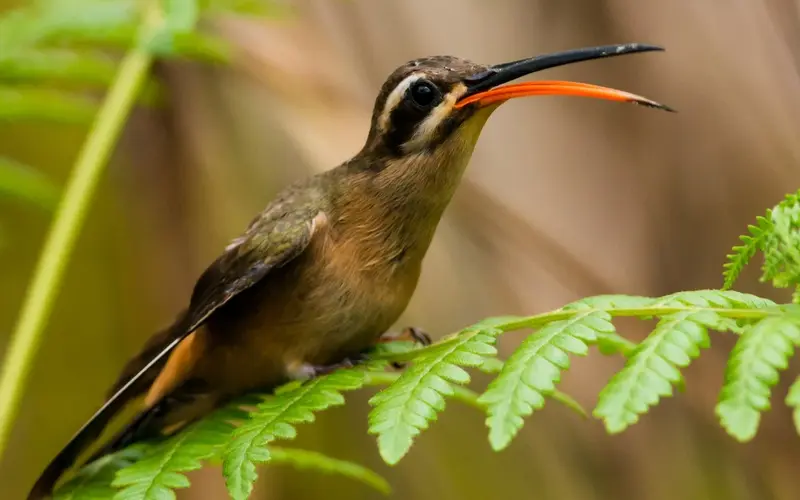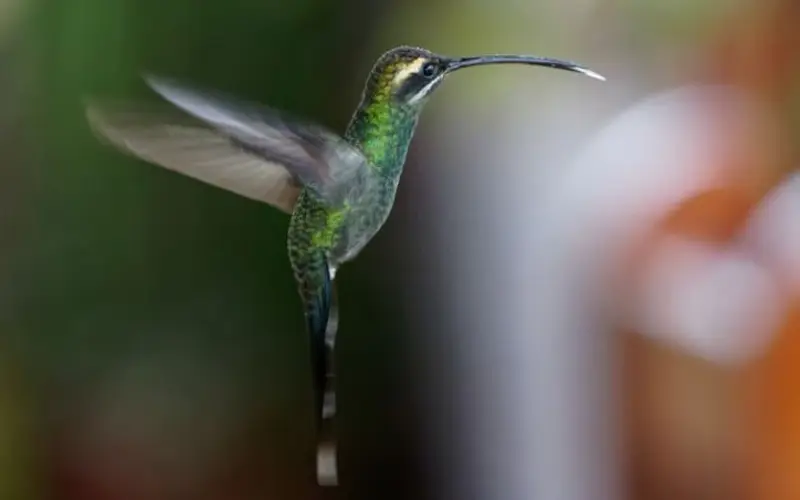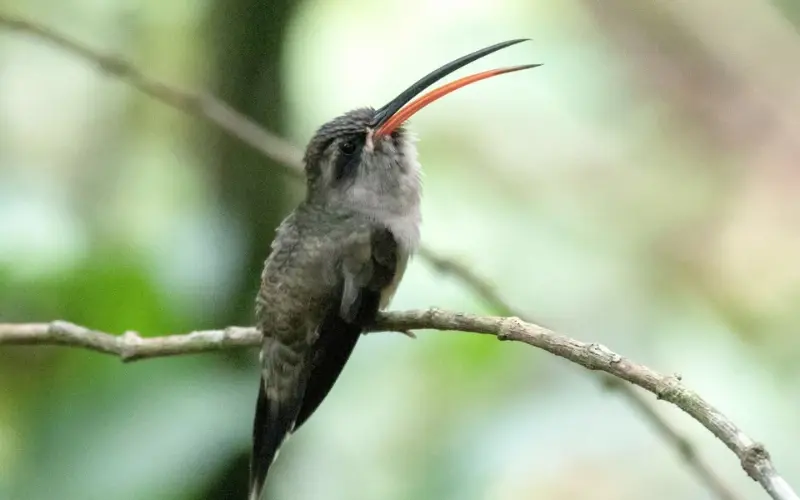The Planalto hermit (Phaethornis pretrei) is a species of bird hummingbird. It is found in Argentina, Bolivia, Brazil, and Peru.
identity
The large hummingbird variety, with its olive green color, contrasts with its cinnamon rump and belly. Note the slightly curved bill with the red lower mandible and prominent dark mask. The tail is long with eye-catching white tips. avoids forests; found in grasslands, scrub, wooded savannas, and forest edges.
Description
The Planalto hermit is about 14 to 16.5 cm (5.5 to 6.5 in) long. Males weigh 4.5 to 7 grams (0.16 to 0.25 oz) and females weigh 3 to 5 grams (0.11 to 0.18 oz). The upper parts of this medium-sized hermit are mostly olive green with reddish underparts. The front to inner tail feathers are longer than the others and have a white tip at the top. Their underparts are cinnamon red. The face has a black “mask” with a white supercilium and gular stripe. The sexes are similar, but the female has shorter wings and a less strongly curved bill.
Distribution / Range
The Planalto hermit is found from northeastern and south-central Brazil to eastern Bolivia, Paraguay, and rarely northwestern Argentina.
They are only sometimes found in forested areas. But it seems to prefer open and semi-open habitats, including scrub areas, parks, and gardens.
They are common in the Caatinga (shrub and thorn forest in northeastern Brazil), the Cerrado (tropical savanna), and the Pantanal (a tropical wetland located mostly in Mato Grosso do Sul in Brazil).
eat the food
Planalto hermits feed primarily on nectar taken from the small flowers of a variety of brightly colored, fragrant trees, herbs, shrubs, and epiphytes.
They also take some small spiders and insects – important sources of protein that are essential to ensuring the proper growth of their young, especially during the breeding season. Insects are often caught in flight (hawking); extracted from leaves or twigs, or spider webs. A nesting female can harbor up to 2,000 insects a day.
Breeding
The Planalto hermit’s nesting season is not fully defined but appears to be from August to April. Its nest is a tall conical cup made of plant material and cobwebs. Unlike other fathorn hermits, it nests in a vertical branch, in a cliff face cavity, and hangs in or under human structures such as bridges, overpasses, and abandoned buildings. The clutch size is two eggs.

To sound
The Planalto hermit‘s song is variable, “a series of often evenly spaced, alternating, single and double notes, such as ‘ti-tsi…tsi…tsi…tsi…ti-tsi…tsi.’ .’ ..tsi’, but also sometimes triple-noted phrases like ‘chu-tsi-tsi…chu-tsi-tsi…chu-tsi-tsi…’.”
condition
The Planalto hermit is listed as least concern by the IUCN. Although its population size and trends are unknown, it is common throughout its wide range, found in many protected areas, and adapted to man-made environments such as orchards and city parks.
Cool Facts of Planalto hermit
1. Hermits visit plants along long routes (in this case up to 0.6 miles or 1 km) – a feeding technique is commonly known as “trapline feeding.”.
2. During the breeding season, males of many hermit species form leks (competitive mating displays) and gather based on traditional displays.
3. Once a female enters their territory, they display for her. Their displays may include wagging their tails and singing.
4. Desired females will enter this area to select a male for mating. Often, she chooses the best singer.
5. Most tubular flowers deter most bees and butterflies from feeding on them and subsequently pollinating the plants.














